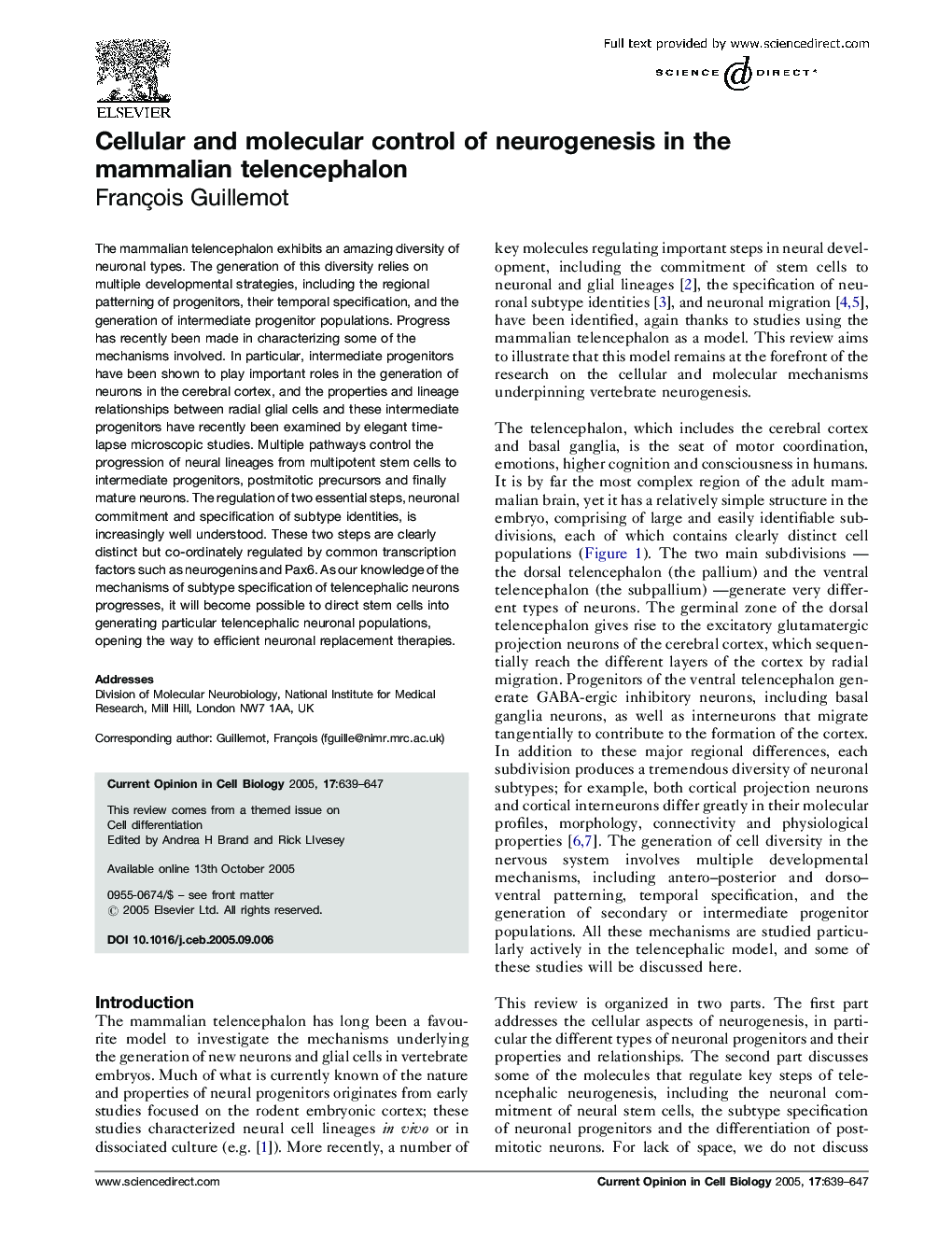| Article ID | Journal | Published Year | Pages | File Type |
|---|---|---|---|---|
| 10929467 | Current Opinion in Cell Biology | 2005 | 9 Pages |
Abstract
The mammalian telencephalon exhibits an amazing diversity of neuronal types. The generation of this diversity relies on multiple developmental strategies, including the regional patterning of progenitors, their temporal specification, and the generation of intermediate progenitor populations. Progress has recently been made in characterizing some of the mechanisms involved. In particular, intermediate progenitors have been shown to play important roles in the generation of neurons in the cerebral cortex, and the properties and lineage relationships between radial glial cells and these intermediate progenitors have recently been examined by elegant time-lapse microscopic studies. Multiple pathways control the progression of neural lineages from multipotent stem cells to intermediate progenitors, postmitotic precursors and finally mature neurons. The regulation of two essential steps, neuronal commitment and specification of subtype identities, is increasingly well understood. These two steps are clearly distinct but co-ordinately regulated by common transcription factors such as neurogenins and Pax6. As our knowledge of the mechanisms of subtype specification of telencephalic neurons progresses, it will become possible to direct stem cells into generating particular telencephalic neuronal populations, opening the way to efficient neuronal replacement therapies.
Related Topics
Life Sciences
Biochemistry, Genetics and Molecular Biology
Cell Biology
Authors
François Guillemot,
